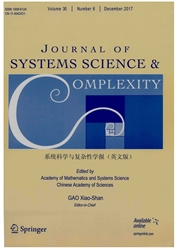

 中文摘要:
中文摘要:
随着节能减排政策的实施,许多企业在设计物流网络时开始考虑对环境的影响.研究了基于成本-碳排放权衡的物流网络设计问题,提出一个多目标整数规划模型来确定物流中心的个数、位置、客户区指派到物流中心的策略以及为客户区分配的车辆类型和车辆数量.应用标准化正规化约束法求解多目标问题的Pareto前沿.通过一个实例,说明标准化正规化约束法求解多目标问题的有效性,分析了物流成本与碳排放之间的权衡关系,得到的Pareto前沿表明增加较少的物流成本,能够较大程度地降低碳排放.最后,对影响模型的重要参数做了灵敏度分析,得出影响物流成本和碳排放的主要因素.
 英文摘要:
英文摘要:
With the implementation of energy conservation and carbon emissions reduction,many enterprises take the impacts on the environment into consideration in the design of logistics network.This paper addresses logistics network design problem based on trade-offs between cost and carbon emissions.A multi-objective integer programming which optimizes the cost and carbon emissions simultaneously is developed to determine the numbers and locations of the logistics center,the assignment of customer areas to the logistics center and the vehicle types and the number of vehicles to each customer areas.Then we use normalized normal constraint method to solve the multi-objective programming to get Pareto frontier.The test result validates that the performance of the normalized normal constraint method is effective.We analyzed trade-off relations between the logistics cost and carbon emissions.The Pareto frontier show that we can reduce the carbon emission greatly with smaller sacrifice in logistics cost.Finally,the sensitivity analysis is conducted for important parameters of the model.We get the main factors that affect the logistics cost and carbon emissions.
 同期刊论文项目
同期刊论文项目
 同项目期刊论文
同项目期刊论文
 BSDE with general filtration driven by Levy processes, and an application in stochastic controllabil
BSDE with general filtration driven by Levy processes, and an application in stochastic controllabil Empirical likelihood confidence regions for semi-varying coefficient models with linear process erro
Empirical likelihood confidence regions for semi-varying coefficient models with linear process erro Positive implications of market valuation under asymmetric quality information, DOI:10.1080/00207543
Positive implications of market valuation under asymmetric quality information, DOI:10.1080/00207543 Pricing and production quantity decisions in a supply chain with demand-stimulating service under de
Pricing and production quantity decisions in a supply chain with demand-stimulating service under de Contracting under asymmetric customer returns information and market valuation with advertising-depe
Contracting under asymmetric customer returns information and market valuation with advertising-depe 期刊信息
期刊信息
